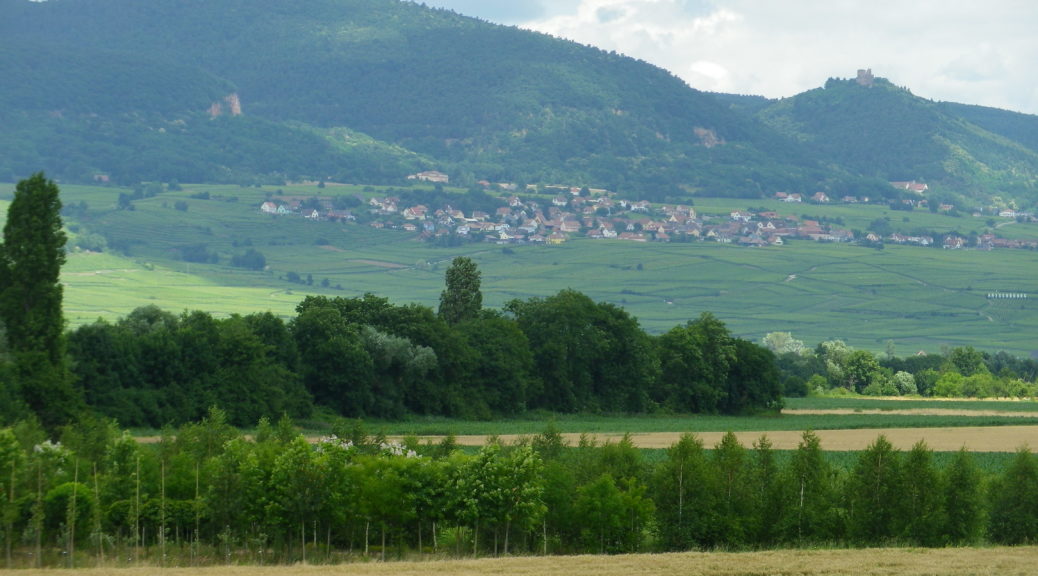Passing through vineyards in the Haut- Rhin department in Alsace is always delightful, especially when passing through some Grands Crus vineyards. This trail also ran by, not through, other vineyards known as clos. By definition, clos are vineyards enclosed by walls. They are special places, like the Grands Crus, each with a special pedigree, producing sought-after wines.
This circuit trail began in Rouffach, a town I had never visited. I would visit the compact historical center after my ride, tucked away from the modern main roads (D18Bis), wishing I had more time to spend there! Then again, time there would have meant taking time from some of the other equally delightful towns and villages (Hattstatt, Obermorschwihr, Eguisheim, Voegtlinshoffen, Gueberschwihr and Pfaffenheim) along the route.
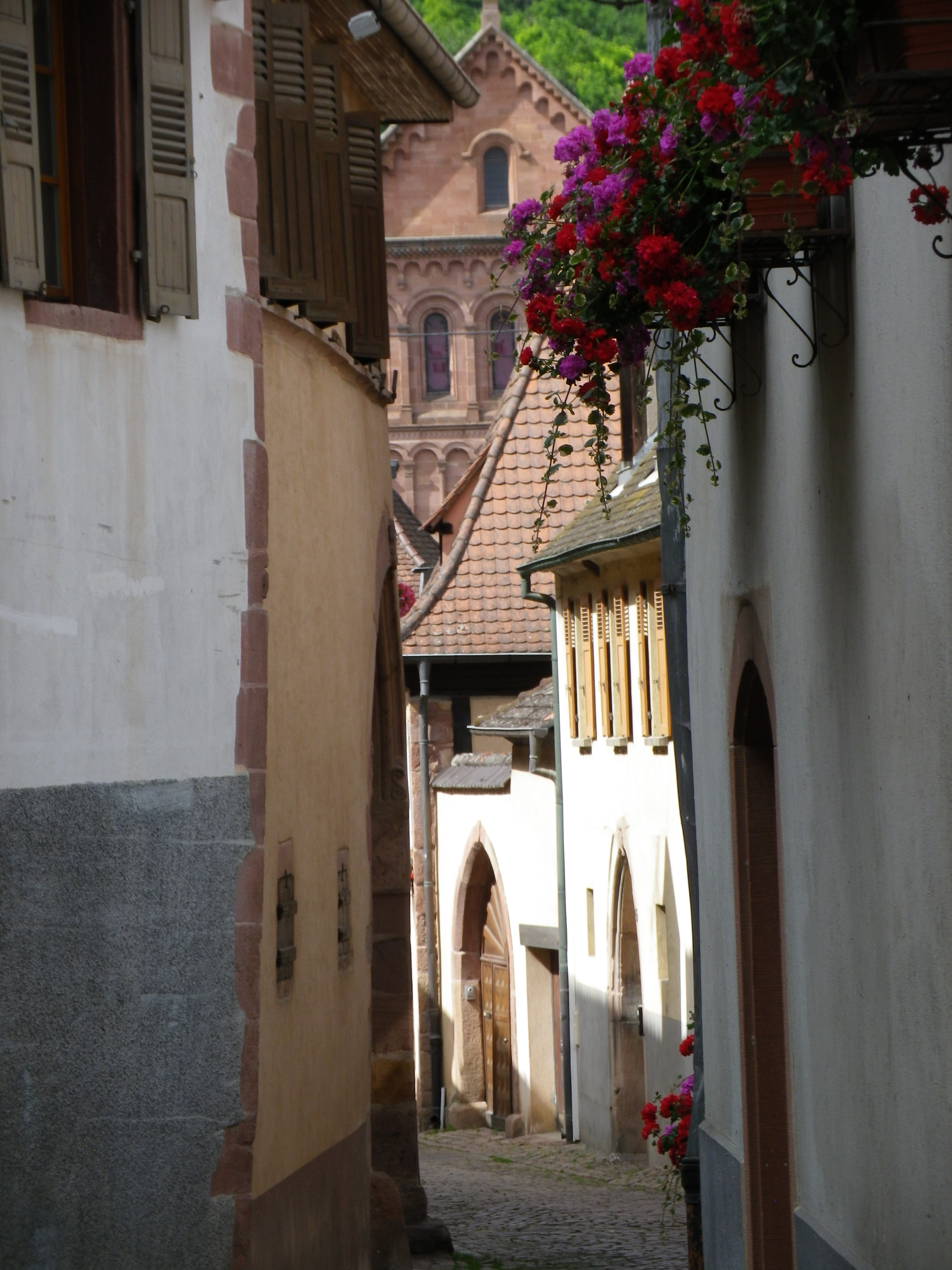
But this circuit was also about the well-respected vineyards in this sector of the Alsace wine region. No sooner through the built-up area of Rouffach, Clos de St Landelin comes into view. Like many clos or Grands Crus, this one also spelled out its name in large letters, another mark of distinction for these special vineyards. Named after an itinerant Irish monk, Clos de St Landelin lies within the Grand Cru of Vorbourg, overlooking Rouffach. I would see this combination of Grand Cru and Clos again, further north, where the Goldert Grand Cru has the Clos de St Imer within it.
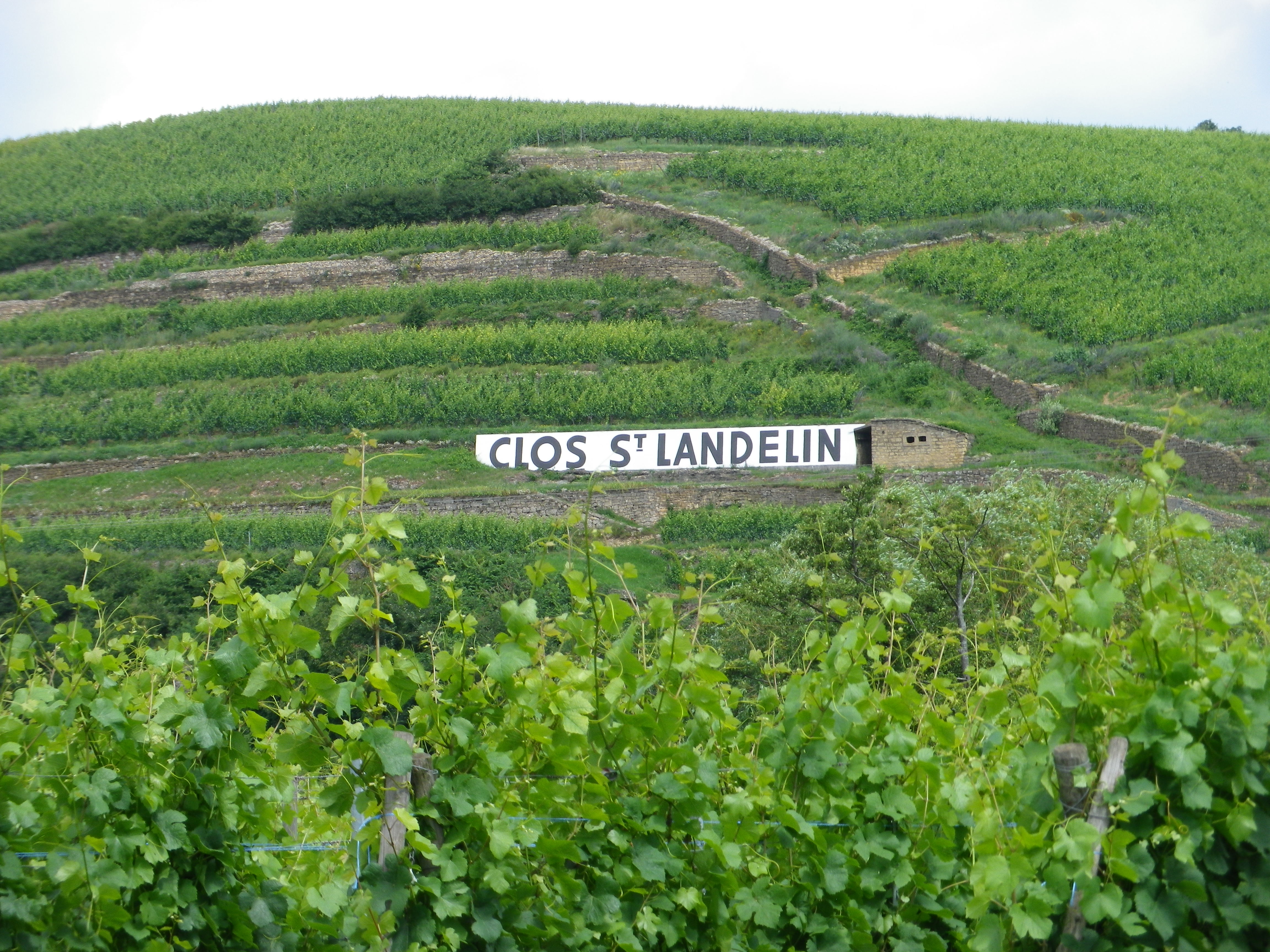
The reason for this is simple. Merovingian kings allotted early monks large territories in pagan areas to encourage conversion, as well as to grow vines (for communion wine). Both vines and conversion went from strength to strength, and soon Alsace was known for both. The circuit took me past both the former Abbey of Marbach, (over 1000 years old), and the nearby Hatschbourg Grand Cru. We have the monks to thank for the rebirth of wine -making in Alsace, and their descendants for doing such a great job of it.
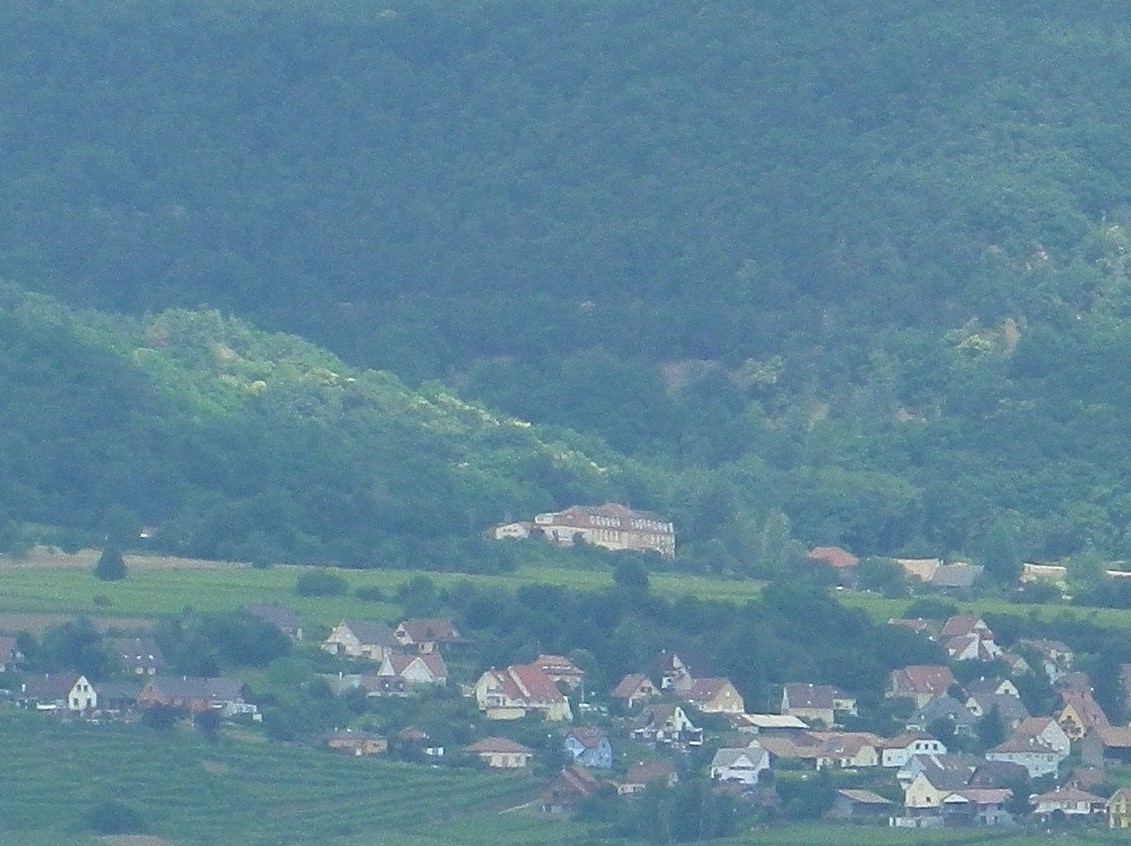
But the height of this match-up came in Eguisheim, at the end of the early Middle Ages. This village which still retains its medieval look, saw a local man, Bruno von Egisheim-Dagsburg, become Pope Leo IX. As son of a nobleman, I wondered, if as a child, he lived in one of the three castles high above the town. (To hike there, see the Nutshell here.) Neither the palace in the center of the village, nor the Chapel of St Leo IX, dates to his era. Nonetheless, the narrow, twisted alleyways, and colorful half-timbered cottages make this a very photogenic village to visit. (Conveniently, Eguisheim marks roughly the half-way point on the circuit, and is the site of a Wolfberger wine cellar – and I love their Cremant!)
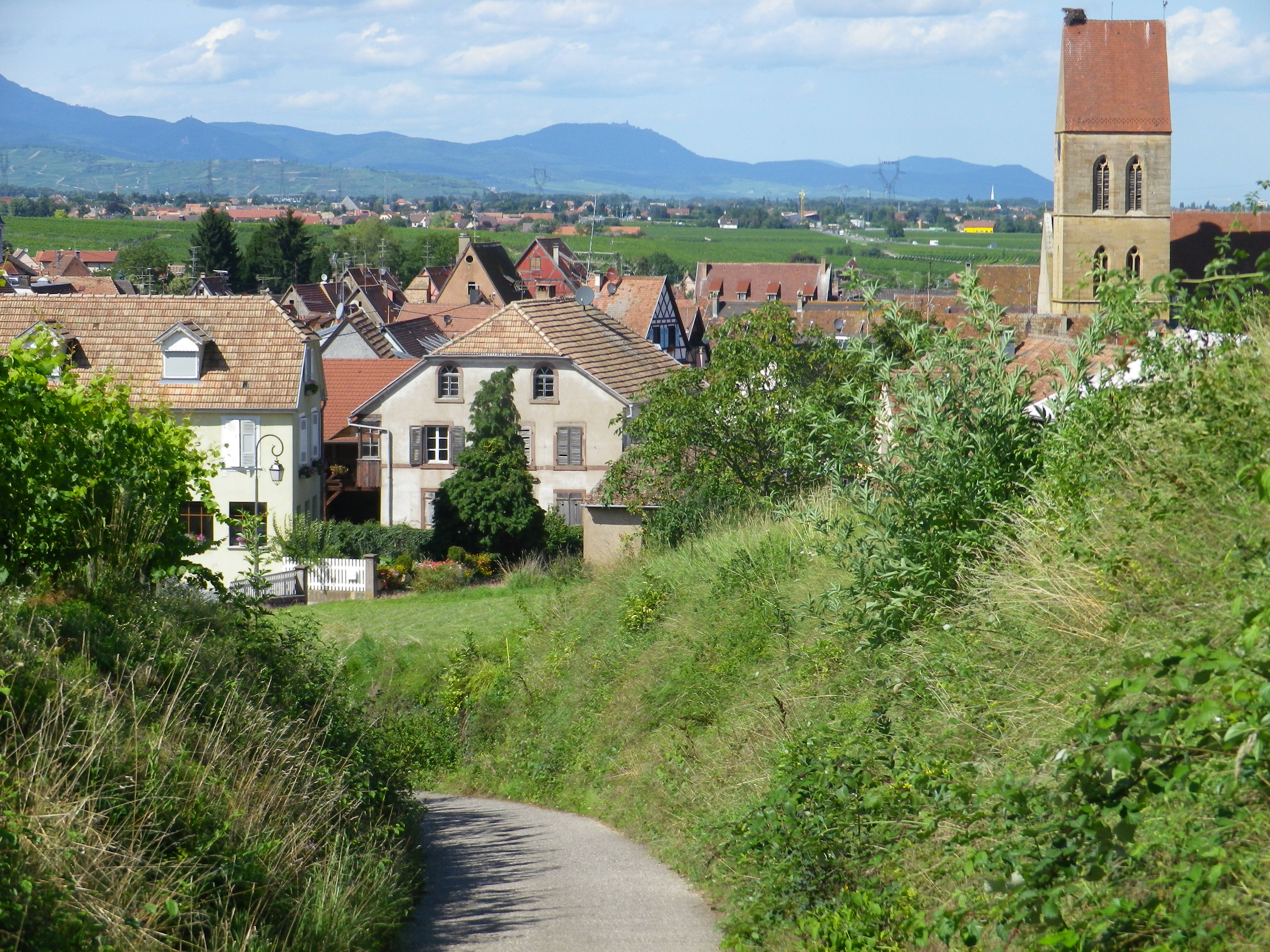
Leaving Eguisheim, up a short but rather steep path (maybe too much Cremant?), I found myself in the middle of the Eichberg Grand Cru. Monks owned this one too, at one point. Shortly after, I was cycling through the Hatschbourg then the Goldert Grands Crus, cruising into Gueberschwihr in no time. This attractive village is home to the Ernest Burn winery. The current owner, whose family’s wine-making tradition dates to 1620, showed me around, and offered more tastes of his Grand Cru Goldert and Clos St Imer wines than I was good for me, at that point. But they were distinctively perfumed and lovely to taste.
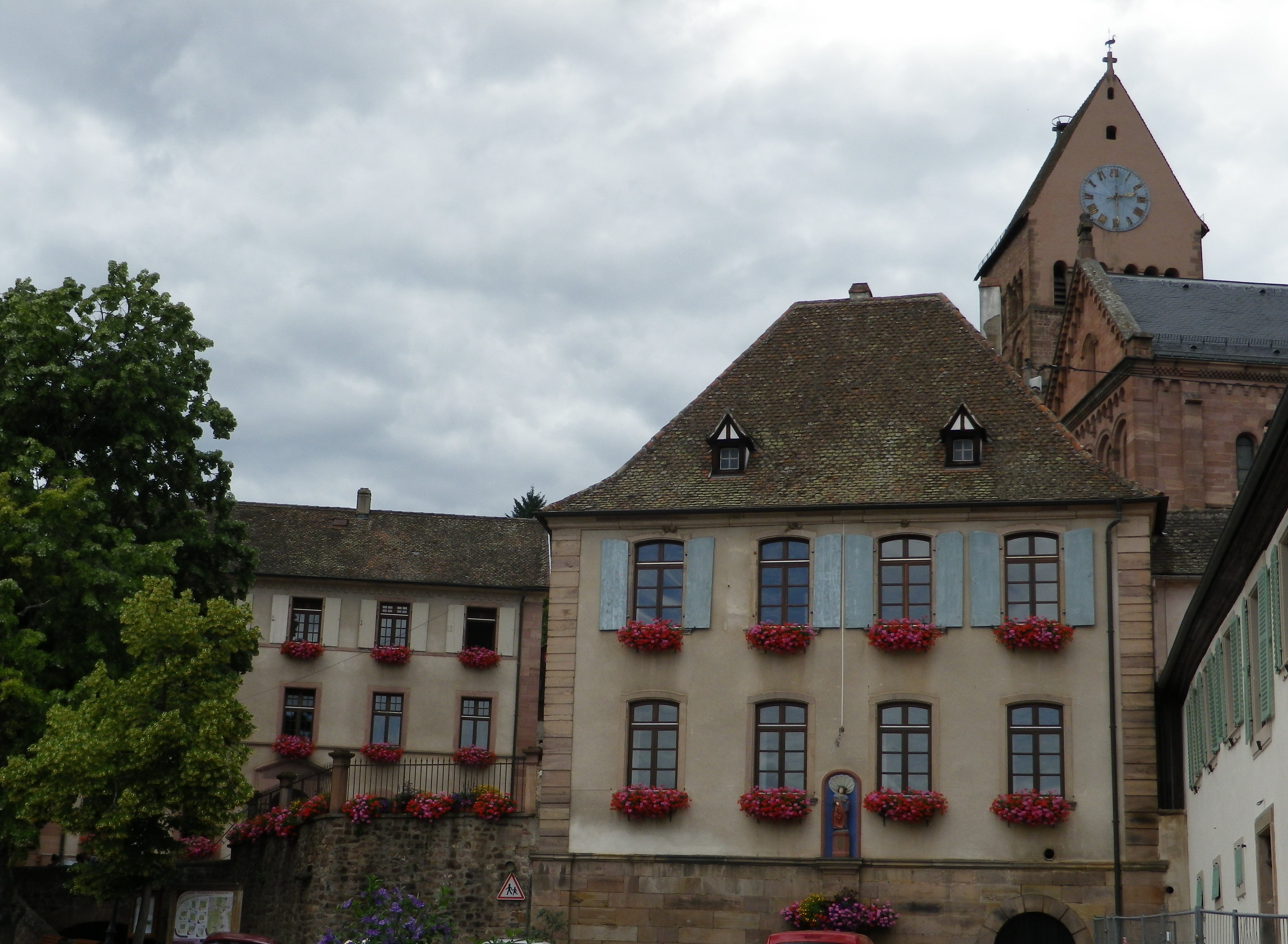
Fortunately, to return to Rouffach, there were only about five kilometers (3.25 miles) to go. With the beautiful weather and views, and having combined the best of both the cultural and viticultural worlds, I found this a really enjoyable, and quite memorable, half-day ride that I was sorry to finish.
